Tărtăria tablets are three clay tablets discovered in a Vinča-Turdaș culture settlement near the village of Tărtăria in Romania...
The tablets were discovered in a sacrificial pit with many other clay objects and human bones. The radio carbon dating of the bones produced the dates 6310 ± 65 yr BP (calibrated 5370-5140 BC)...
The reason why these tablets are so important is that they contain the Vinča (Old European) symbols.
But on Tărtăria tablets they are engraved in such a way as to imply that these symbols can be interpreted as groups...Like a script??? Script which predates Sumerian proto-writing by thousands of years...
By the way, Tărtăria tablets are not the only objects where we find these symbols engraved in sequences...Hence the proposal that this is indeed a kind of script...
Which is why everyone is so edgy about this and why so many people put so much effort into discrediting these tablets...Surely it can't be that proto-writing originated in the Balkans...
And "if" indeed these "so called" Vinča symbols are genuine, "they are surely a local isolated development and have nothing to do with the development of writing in Mesopotamia"..."The similarities are purely coincidental"...
Those who still see Sumerian culture as an isolate without any external influences won't like this post from my blog, or any of the other blog posts linked from it...
But here I would like to pour some really really cold water on the "who invented the first symbolic script" debate...I would like to look closely at one of the Tărtăria tablets. Not one of the two "cool" ones with holes, which seem to have been made to be used together...
I would like to look at the often ignored third tablet...This one...And I would like to say this: O MY GOD!!! How could I have been so blind!
What I think is depicted on this tablet is from right to left: 1. Ibex goat
2. Grain
3. A person who looks like he is bent forward...like as if he is working the land...maybe planting grain???
Now if this tablet was found anywhere within the fertile Early Neolithic Fertile Crescent, I would have immediately interpret this tablet like this: When Ibex start to mate, and the first rains arrive, plough and sow your grain...
Because in Fertile Crescent the climatic year is divided into two halves: dry and hot, summer (May-Oct) and wet and cool, winter (Nov-Apr).
And the beginning of the rainy season coincides with the beginning of the mating season of the Ibex goats (Goats of rain).
It is because of this link between Ibex goats, rain, and agriculture, that Ibex is the most depicted thing on early decorated objects from this region...You can read about "The Goat of Rain" (Ibex) in my posts "Goat carrier", "Rain and flood", "Queen Puabi's cylinder seal"...and many others...
One other thing happens in Fertile Crescent, when ibex goats start to mate and when first rains arrive...It's time to plough the land and plant grain.
Storm (rain) god Ninurta, was, in the earliest records, also agriculture god...Whose symbol was the the plough...Which he gave to the people...Here is a god (Ninurta) giving plough to the people...With goat of rain next to the throne...
So is this what this Tărtăria tablet means? Plant your grain when Ibex goats mate?
That's amazing!!! Now did Ibex goats ever live in Romania? I don't know. The only info I could find about Ibex goats in South Eastern Europe, is this article "Past and present distribution of the genus Capra in Greece", and in it we can read that: "...The Alpine ibex Capra ibex and the wild goat Capra aegagrus are the only caprids known to have existed in the Balkan Peninsula, from where it disappeared after 5600 BC due to hunting..."
The Tartaria tablets, which are dated to calibrated 5370-5140 BC were made from a small quantity of clay and a lot of sand. According to geological analysis, the sand in the tablet has crystals of quartz typical of the mountain 20-25km west of Tărtăria and very well known in Neolithic times for the gold mines...
So the tablets were most likely made in Romania...So I wonder if the above paper is wrong, and Ibex goats actually still lived in the Balkans at the time when these tablets were made?
The winter grain planting in the Balkans happens in October. I don't know when the ibex root took place in the Balkans. In Most of their range, Ibex goats start mating in Oct/Nov. So it is possible that in the south eastern Balkans their mating season also started during that time of the year. which would have made them a good animal calendar marker for grain planting season, just like in Fertile Crescent.
Maybe, except the animal depicted on the Tartaria tablet looks much more like depictions of an Ibex...And we find both deer and goat among Vinča (Old European) symbols...
The thing is, the Early Balkan farmers could have found other animal calendar markers that correspond to the main events of the grain agriculture season...Deer would fit. If they were planting grain in autumn...Deer mandibles, like these ones, were found at the bottom of the sacrificial pit of the 7th millennium grain temple in Blagotin...Why? Deer must have been in some way linked to the agricultural cult.
I wrote about it in my post "Blagotin" where I pointed at the fact that deer mandibles and wood/antler + flint imitations of deer mandibles were used as sickles by Neolithic farmers...
So it is possible that deer replaced goat as calendar marker for grain planting season in the Balkans...The thing is that some archaeologists believe the early Balkan farmers grew spring grain varieties, which are planted after the first spring floods...In Apr...I talked about this in my post "How to kill a witch"...Interestingly, this is the time when deer shed their antlers
Not something that you could miss easily if you were a hunter gatherer turned farmer...
It gets better. Antler pick was used in both farming and mining as early as the Neolithic period. In farming it was used for making furrows for planting grain...
So let me see
1. You find a deer antler shed by a red deer (Mar-May)
2. You make a pick out of it
3. You use it to make a furrow and plant your grain in Apr
4. You use a sickle made out of a deer mandible to harvest your grain
Interesting...
But there is another possibility. That Tartaria tablets were not actually made in the Balkans, but somewhere in Western Asia.
Did the Neolithic farmers arrive all in one "package tour"? Or did they, like all the immigrants anywhere do, keep coming and going between "the old home" and the "new home". Bringing relatives to "see the Balkans, the land of opportunities"...
Were these artefacts brought to Europe from Western Asia, where Ibex goats still live today? And where during the Neolithic, Ibex was the number one animal calendar marker, linked with agriculture?
The fact that we find artefacts depicting Ibex goats in huge amounts everywhere in the Neolithic Fertile Crescent, whereas we only find few isolated depictions of Ibex goats in the Neolithic South Eastern Europe, leads me to believe that these were isolated imports...
It is possible that these tablets are much older than calibrated 5370-5140 BC, and they were used during the time when Ibex goats still lived in the Balkans...And were passed as a treasured heirloom from generation to generation...
By the time they were deposited in the grave where they were found, they were possibly completely meaningless if there were no Ibexes living and mating in South Eastern Europe, around the time when you were supposed to plant your grain...
Oh yeah, I forgot another possible explanation. This one favoured by most archaeologists.
This is just meaningless bunch of scribbles without an explanation...
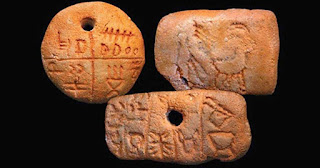




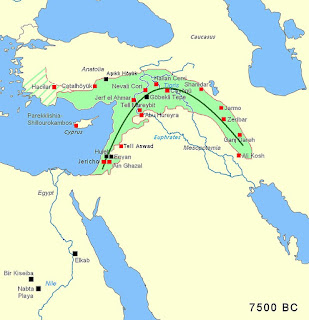


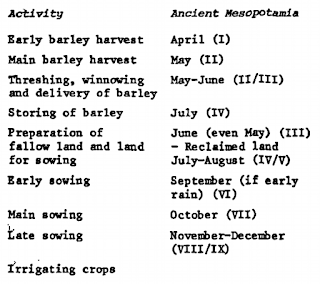



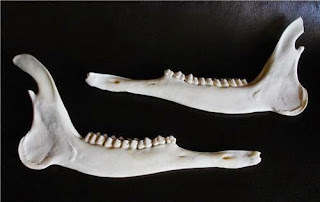

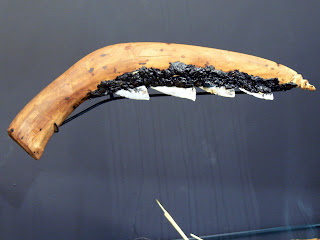

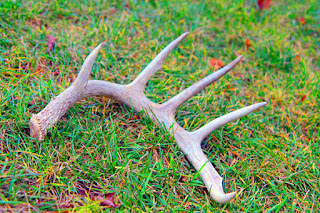

> This is just meaningless bunch of scribbles without an explanation...
ReplyDeleteHa!
Good work, keep 'em coming!